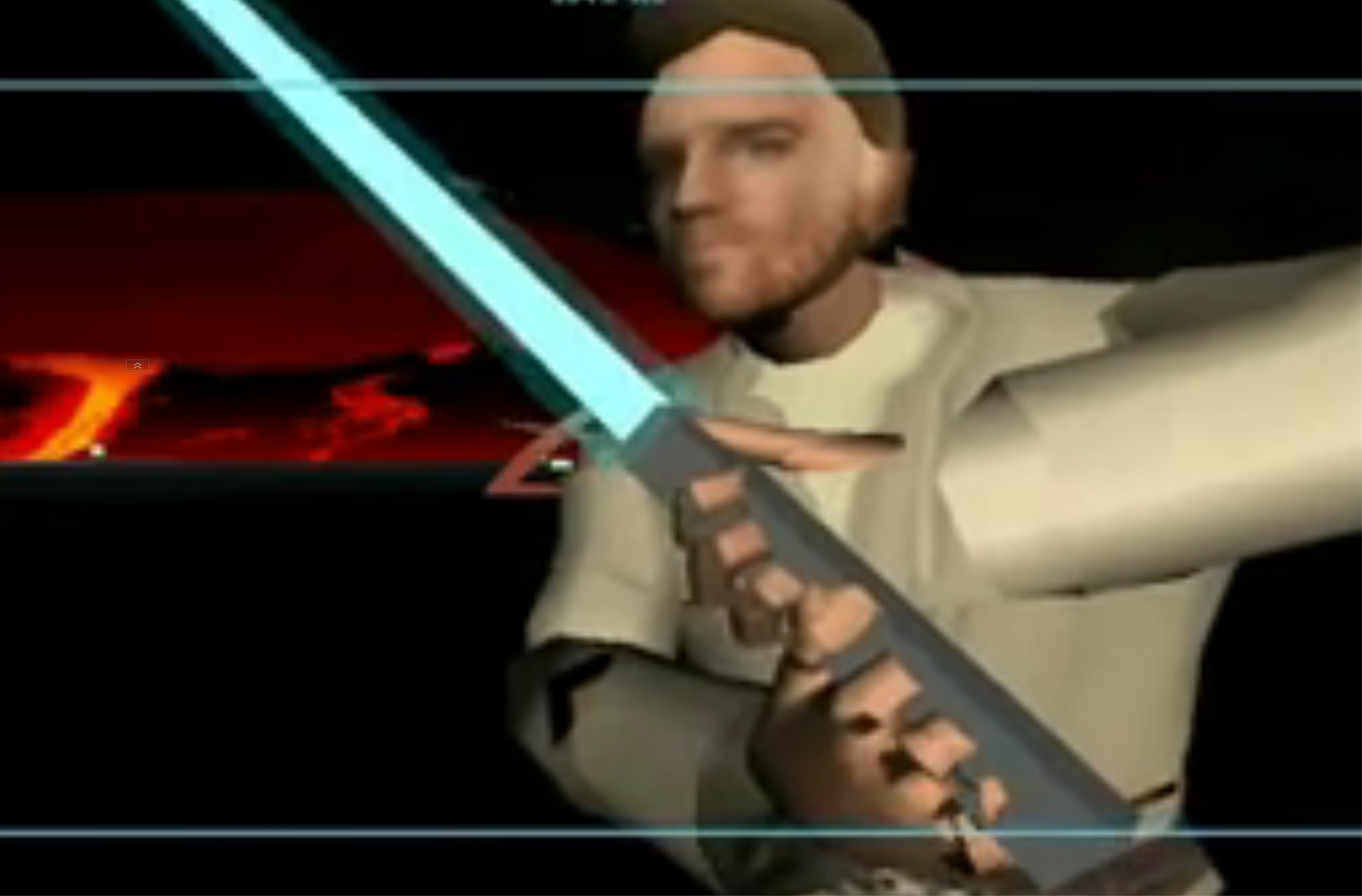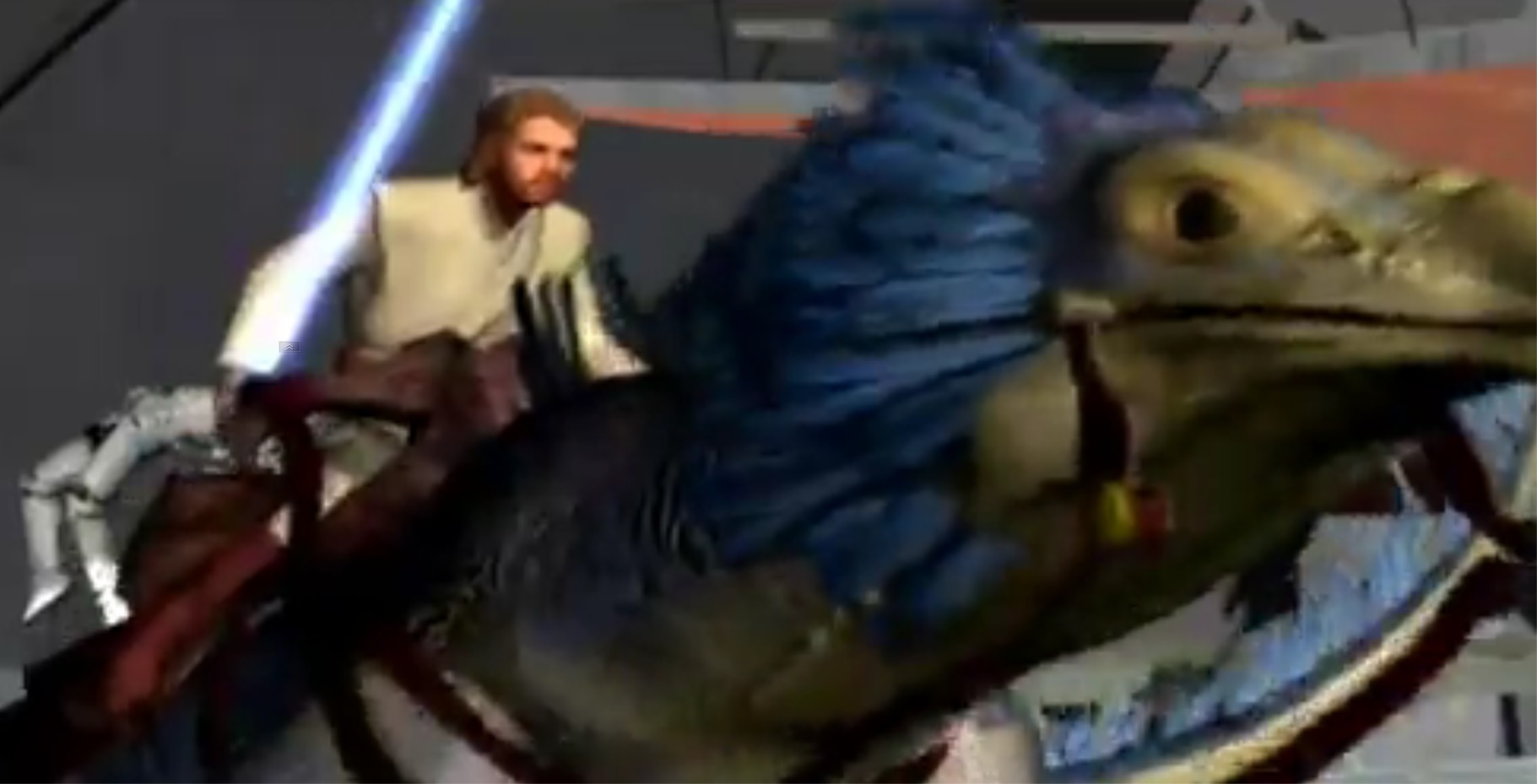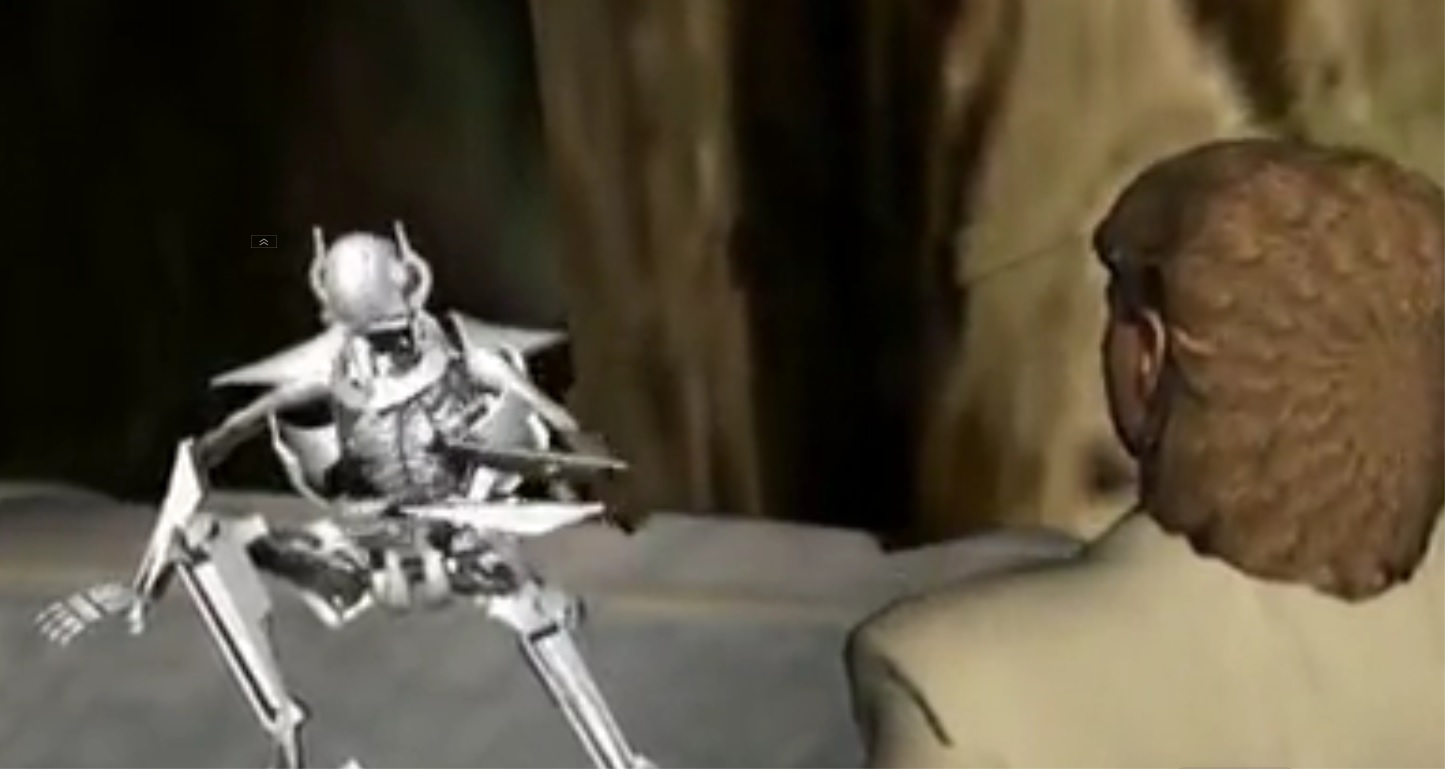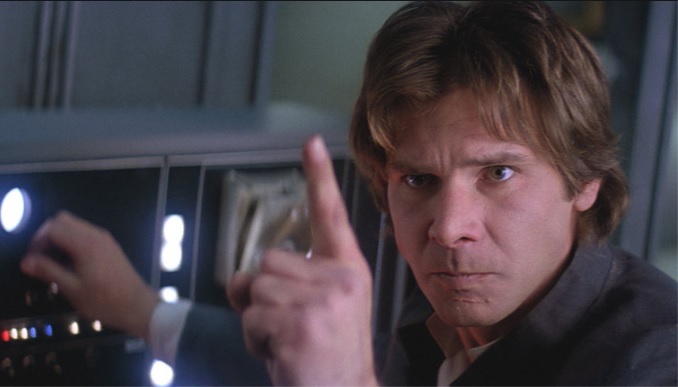Tear Wars: The Awakening Site
In honor of the recent release of the second trailer for the long-awaited film "Star Wars VII: The Force Awakens" - it will be interesting to compare the process and basic techniques of creating brilliant epic blockbusters and regular websites. Using unique materials as examples, we find out that, as it turns out, everything in the Hollywood project management was invented already in the 70s of the last century. And this is how it works:

Most often, theorists-humanities favorite example of the process of creating complex information systems is the construction of residential buildings. Conventional phrases that before construction begins, they first make a drawing of a building and calculate the total load, rather than picking up the wallpaper in the bedroom and the curtains in the kitchen right away - they hacked the mouth of all internet-conference and Internet-symposium visitors.
')
As it seems to me, in view of the frequent use, this “building” association has already lost persuasiveness and today more and more new projects begin again and again with a beautiful picture, and not with the “driving of stable piles into the viscous soil” of the RuNet. That is why this article proposes to consider a much closer and more beautiful analogue of creating websites - the production of fantastic films.
I will not stop for long and savor the idea that modern websites stuffed with animation become more and more like a full-fledged feature film with a plot, several unexpected page navigation, climax when entering a phone or bank card number and the final captions “Thank you for your order” Let us consider the stages through which the filming of each part of Star Wars takes place:

1. The idea - she must visit the owner of the future site or the author’s team of the future film. Obviously, without the initial idea, everything else will simply be a pile of letters and pictures with no intelligible goal.
2. Organization of production - this obligatory stage is also obliged to precede the brainstorming of designers on the choice of icons. The organization of production implies a clear separation of the process into a finite number of stages, and a very specific fixation of each stage in the time and budget framework. In a large studio, the task of forming a team of performers and their areas of responsibility in a project must necessarily occur before the work begins, and not in the process itself, often replacing all other current tasks. Without competent planning of the business itself and the process of creating the site - your project will not save even the most ingenious design. Yes, these obvious things were understood in Hollywood almost 100 years ago, but do they know about this in your studio?
3. The choice of technology - in the cinema is the choice of cameras and lighting devices, landscapes for field shooting and software for the imposition of special effects. This stage also occurs in advance, identifying the necessary needs and limitations to the creation of a future masterpiece. The site has the same thing — the platform, the hosting, the methods for downloading and uploading data — must be clearly written long before the designer is allowed to download the image editor.
4. Studies that take place in parallel with the choice of technologists, adjust the requirements, limitations and problems to be solved. For example, when shooting a historical film, this is an invitation to consultants on weapons, costumes and the psychology of human behavior in that era. Well, when creating a high-quality website - the study of primary needs, problems and tasks from a clearly defined future target audience of the site. Here it is allowed for the first time to turn on their computers, but only for the sake of drawing the mindmap of the target audience — their questions, expectations, and habitual patterns of behavior on the future site — more beautifully than on a piece of paper.
5. Writing the script - the next step in the creation of any masterpiece in cinema or the web is a text document describing the characters, their main dialogues and the final essence of the plot. This process can be divided into two nested stages - a brief brief (synopsis) and a full-fledged multi-page detailed description of all actions and processes. The main thing is that they are clear to all team members, clearly interpreted and quite clearly describe the overall sequence of scenes and convey the meaning of what is happening on the screen. Scenario, like TK, should look not just a list of requirements and wishes, but very clearly answer the questions: what exactly are you planning to do, by whom and how. Here are very welcome tables with detailed lists of all objects, functions, and even controls. It is well known that every viewer associates himself with a certain character of the film, whom he sympathizes with the most, which means that the table of relations between the characters will not hurt you. To guess with the characters, their characters and motives of behavior is to guess with the future sympathies of the target audience of the film.

6A. Music and sound may still have less significance for online stores than for feature films, but let's not forget that the site may also contain elements of gamification. And already in the gaming components without creating high-quality sound effects - today is nowhere.
6b. Next comes the most delicious and usual for web studios - visualization. But it also takes place in several stages - from creating primitive storyboards, somewhat reminiscent of comics, to creating animatics, showing an approximate logic of transitions between pictures, sometimes even showing the duration of certain scenes.
7A. In parallel with this, artists create concept art for the future work. Here the task is rather not to detail the future film before the frame, but to convey the general spirit, mood, visual meaning of the future pictures.

Pay attention to how these very first conceptual drawings of robots differ from the final embodiment, but the main thing is that the essence is absolutely true.
And here are the screenshots of the unique animatics that were taken here dai.ly/xs4g9m , here dai.ly/xs4an5 and here dai.ly/xs4e1v and here dai.ly/xs40ag :




It is here, at this seventh stage, according to several sources, many of the Star Wars scenes go through a kind of AB testing, in which the entire team of creators jointly selects the most successful option, which they then give to the final production.
So, in the examples below, some variants of the scenes of the third part of Star Wars: Sith's Revenge, rejected personally by Lucas, are displayed. As you can see, in order to save time and budget, the assessment of the coolness of the scenes was made without perfect pixel-by-pixel study and bringing all special effects to perfect quality. This was done because with such split-testing, it is not the design or the visual component that is being tested, but the content of the main idea, the semantic load of the storyline. So without tears and tantrums many interesting episodes were cut off:




So, with another useless holivar on the topic “Should I draw and typeset all prototypes before testing, otherwise nobody will understand anything” I think this is over. The theme is closed - no layout and gradients, as required by Darth Vader himself.

7b. Actually shooting and modeling in feature films is the stage of creating episodes with live and animated characters, taking into account their proportions and manner of movement during the imposition. Web studio at this stage creates just the design page layouts. It is important to note that coordination and regular statements on the artistic council are no longer required - all disputes and comparisons have already been conducted on animatics prototypes, and now the work is carried out clearly to put the approved concepts into life.
8. Setup, animation, visualization and rendering - the imposition of physical laws and legal norms on a lifeless virtual model. So the little letters and pixels on the screen are gradually transformed into a real unique Star Wars universe, in which each viewer will then be immersed. In the studios for the production of sites at this stage should be the layout and programming of individual fields, forms, indicators. The interface gradually comes to life and is ready to respond to user requests. Your viewer and buyer should not doubt that the fire on the screen of his monitor can be burned, and the blade of the painted blade can injure the hand.
9. Compositing and color correction - the imposition of the background, checking for readability of texts in different lighting and monitor quality. Do not forget to check that your film, like the site, is sufficiently readable and contrasted for people who do not distinguish between certain colors or have slight vision problems.
10. Final editing of the film - the final establishment of all algorithms, interactions and logical connectives in the film. In the creation of a site, this process corresponds to the usual programming and launch into operation.
I would not single out the production at one of the stages of creation, since this is a completely separate area of promotion of the product being created, which should be launched at the stage of writing the script (technical specifications for the site) and absorb up to 50% of the total budget allocated to the project.
To summarize: if we compare the development of the site with the filming of the film, then as we can see the following workload of specialists:

a) The first turning on of the PC is necessary only at the 4th stage, not earlier;
b) Programmer - needed in only one stage out of ten;
c) The illustrator will be involved only from step 6, that is, in the second half of the project. To put it simply, if you set the overall timeframe of the project at 4 months - to save your payroll, you can safely send the entire design department on leave for the first two months - they have nothing to do in the project;
d) A character and prototyping specialist is needed at stages 4 and 5, no more. Please note that the screenwriter in the cinema is not at all responsible for the quality of rendering and does not control the work of the sound studio, and just as the compiler of storyboards is not responsible for poor-quality production. But the IT cluster lives its own way, goes its own way and loves the project manager very much to hang all the stages indiscriminately, for some reason relying on the quality result in the end;
e) The director, who is also the project manager, is needed at stages 1,2,6,7,10. That is, his contribution to the process also does not exceed 50%;
f) And only the general producer can and should be immersed in the project without any doubt and with their own money and reputation are responsible for both the visual and the marketing component of their project. Only from him one in the end depend on the fees of the future masterpiece, and plans to create a sequel, and the sale of rights to caps T-shirts. Only he alone risks not paying off creditors and losing investors, only he alone solves all the issues on advertising and invited “stars” in the team.
Unfortunately, the powers of the average product manager of Russian web studios are still losing in this respect with the authority of the general producer of the film for managing both monetary and human resources in the project. Maybe that's why most sites without tears and not look?
.

Most often, theorists-humanities favorite example of the process of creating complex information systems is the construction of residential buildings. Conventional phrases that before construction begins, they first make a drawing of a building and calculate the total load, rather than picking up the wallpaper in the bedroom and the curtains in the kitchen right away - they hacked the mouth of all internet-conference and Internet-symposium visitors.
')
As it seems to me, in view of the frequent use, this “building” association has already lost persuasiveness and today more and more new projects begin again and again with a beautiful picture, and not with the “driving of stable piles into the viscous soil” of the RuNet. That is why this article proposes to consider a much closer and more beautiful analogue of creating websites - the production of fantastic films.
I will not stop for long and savor the idea that modern websites stuffed with animation become more and more like a full-fledged feature film with a plot, several unexpected page navigation, climax when entering a phone or bank card number and the final captions “Thank you for your order” Let us consider the stages through which the filming of each part of Star Wars takes place:

1. The idea - she must visit the owner of the future site or the author’s team of the future film. Obviously, without the initial idea, everything else will simply be a pile of letters and pictures with no intelligible goal.
2. Organization of production - this obligatory stage is also obliged to precede the brainstorming of designers on the choice of icons. The organization of production implies a clear separation of the process into a finite number of stages, and a very specific fixation of each stage in the time and budget framework. In a large studio, the task of forming a team of performers and their areas of responsibility in a project must necessarily occur before the work begins, and not in the process itself, often replacing all other current tasks. Without competent planning of the business itself and the process of creating the site - your project will not save even the most ingenious design. Yes, these obvious things were understood in Hollywood almost 100 years ago, but do they know about this in your studio?
3. The choice of technology - in the cinema is the choice of cameras and lighting devices, landscapes for field shooting and software for the imposition of special effects. This stage also occurs in advance, identifying the necessary needs and limitations to the creation of a future masterpiece. The site has the same thing — the platform, the hosting, the methods for downloading and uploading data — must be clearly written long before the designer is allowed to download the image editor.
4. Studies that take place in parallel with the choice of technologists, adjust the requirements, limitations and problems to be solved. For example, when shooting a historical film, this is an invitation to consultants on weapons, costumes and the psychology of human behavior in that era. Well, when creating a high-quality website - the study of primary needs, problems and tasks from a clearly defined future target audience of the site. Here it is allowed for the first time to turn on their computers, but only for the sake of drawing the mindmap of the target audience — their questions, expectations, and habitual patterns of behavior on the future site — more beautifully than on a piece of paper.
5. Writing the script - the next step in the creation of any masterpiece in cinema or the web is a text document describing the characters, their main dialogues and the final essence of the plot. This process can be divided into two nested stages - a brief brief (synopsis) and a full-fledged multi-page detailed description of all actions and processes. The main thing is that they are clear to all team members, clearly interpreted and quite clearly describe the overall sequence of scenes and convey the meaning of what is happening on the screen. Scenario, like TK, should look not just a list of requirements and wishes, but very clearly answer the questions: what exactly are you planning to do, by whom and how. Here are very welcome tables with detailed lists of all objects, functions, and even controls. It is well known that every viewer associates himself with a certain character of the film, whom he sympathizes with the most, which means that the table of relations between the characters will not hurt you. To guess with the characters, their characters and motives of behavior is to guess with the future sympathies of the target audience of the film.

6A. Music and sound may still have less significance for online stores than for feature films, but let's not forget that the site may also contain elements of gamification. And already in the gaming components without creating high-quality sound effects - today is nowhere.
6b. Next comes the most delicious and usual for web studios - visualization. But it also takes place in several stages - from creating primitive storyboards, somewhat reminiscent of comics, to creating animatics, showing an approximate logic of transitions between pictures, sometimes even showing the duration of certain scenes.
7A. In parallel with this, artists create concept art for the future work. Here the task is rather not to detail the future film before the frame, but to convey the general spirit, mood, visual meaning of the future pictures.

Pay attention to how these very first conceptual drawings of robots differ from the final embodiment, but the main thing is that the essence is absolutely true.
And here are the screenshots of the unique animatics that were taken here dai.ly/xs4g9m , here dai.ly/xs4an5 and here dai.ly/xs4e1v and here dai.ly/xs40ag :




It is here, at this seventh stage, according to several sources, many of the Star Wars scenes go through a kind of AB testing, in which the entire team of creators jointly selects the most successful option, which they then give to the final production.
So, in the examples below, some variants of the scenes of the third part of Star Wars: Sith's Revenge, rejected personally by Lucas, are displayed. As you can see, in order to save time and budget, the assessment of the coolness of the scenes was made without perfect pixel-by-pixel study and bringing all special effects to perfect quality. This was done because with such split-testing, it is not the design or the visual component that is being tested, but the content of the main idea, the semantic load of the storyline. So without tears and tantrums many interesting episodes were cut off:




So, with another useless holivar on the topic “Should I draw and typeset all prototypes before testing, otherwise nobody will understand anything” I think this is over. The theme is closed - no layout and gradients, as required by Darth Vader himself.

7b. Actually shooting and modeling in feature films is the stage of creating episodes with live and animated characters, taking into account their proportions and manner of movement during the imposition. Web studio at this stage creates just the design page layouts. It is important to note that coordination and regular statements on the artistic council are no longer required - all disputes and comparisons have already been conducted on animatics prototypes, and now the work is carried out clearly to put the approved concepts into life.
8. Setup, animation, visualization and rendering - the imposition of physical laws and legal norms on a lifeless virtual model. So the little letters and pixels on the screen are gradually transformed into a real unique Star Wars universe, in which each viewer will then be immersed. In the studios for the production of sites at this stage should be the layout and programming of individual fields, forms, indicators. The interface gradually comes to life and is ready to respond to user requests. Your viewer and buyer should not doubt that the fire on the screen of his monitor can be burned, and the blade of the painted blade can injure the hand.
9. Compositing and color correction - the imposition of the background, checking for readability of texts in different lighting and monitor quality. Do not forget to check that your film, like the site, is sufficiently readable and contrasted for people who do not distinguish between certain colors or have slight vision problems.
10. Final editing of the film - the final establishment of all algorithms, interactions and logical connectives in the film. In the creation of a site, this process corresponds to the usual programming and launch into operation.
I would not single out the production at one of the stages of creation, since this is a completely separate area of promotion of the product being created, which should be launched at the stage of writing the script (technical specifications for the site) and absorb up to 50% of the total budget allocated to the project.
To summarize: if we compare the development of the site with the filming of the film, then as we can see the following workload of specialists:

a) The first turning on of the PC is necessary only at the 4th stage, not earlier;
b) Programmer - needed in only one stage out of ten;
c) The illustrator will be involved only from step 6, that is, in the second half of the project. To put it simply, if you set the overall timeframe of the project at 4 months - to save your payroll, you can safely send the entire design department on leave for the first two months - they have nothing to do in the project;
d) A character and prototyping specialist is needed at stages 4 and 5, no more. Please note that the screenwriter in the cinema is not at all responsible for the quality of rendering and does not control the work of the sound studio, and just as the compiler of storyboards is not responsible for poor-quality production. But the IT cluster lives its own way, goes its own way and loves the project manager very much to hang all the stages indiscriminately, for some reason relying on the quality result in the end;
e) The director, who is also the project manager, is needed at stages 1,2,6,7,10. That is, his contribution to the process also does not exceed 50%;
f) And only the general producer can and should be immersed in the project without any doubt and with their own money and reputation are responsible for both the visual and the marketing component of their project. Only from him one in the end depend on the fees of the future masterpiece, and plans to create a sequel, and the sale of rights to caps T-shirts. Only he alone risks not paying off creditors and losing investors, only he alone solves all the issues on advertising and invited “stars” in the team.
Unfortunately, the powers of the average product manager of Russian web studios are still losing in this respect with the authority of the general producer of the film for managing both monetary and human resources in the project. Maybe that's why most sites without tears and not look?
.
Source: https://habr.com/ru/post/289782/
All Articles